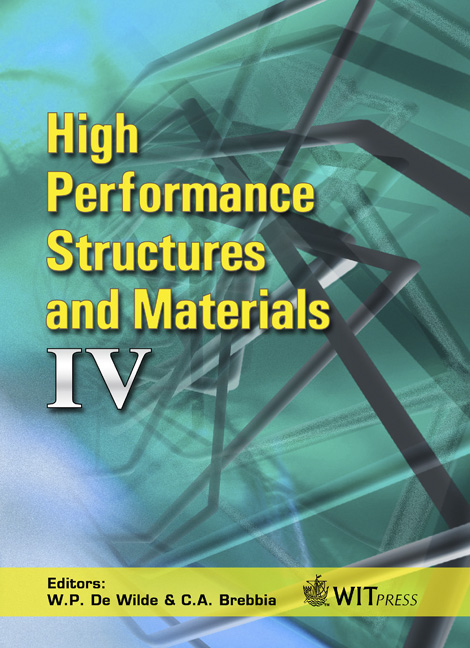Fatigue Lifetime Prediction Methodology Of Rubber Components
Price
Free (open access)
Transaction
Volume
97
Pages
9
Page Range
285 - 293
Published
2008
Size
1987 kb
Paper DOI
10.2495/HPSM080301
Copyright
WIT Press
Author(s)
C. S. Woo & W. D. Kim
Abstract
Interest in the useful lifetime for rubber components increases where the extension of a warranty period is considered. Fatigue analysis and lifetime evaluation are very important in design procedures to assure the safety and reliability of automotive rubber components. The fatigue lifetime prediction methodology of vulcanized natural rubber was proposed by incorporating the finite element analysis and fatigue damage parameter determined from a fatigue test. Nonlinear finite element analyses of the 3-dimensional dumbbell specimen and rubber component were performed using the Ogden hyper-elastic material model determined from the tensile, shear and biaxial tension tests of the natural rubber, and resulted in relationships between displacement and Green-Lagrange strain for both the dumbbell specimen and the rubber component. Fatigue life tests were performed using the 3-dimensional dumbbell specimen at different levels of mean displacement. The fatigue life curve of the natural rubber represented by the maximum Green-Lagrange strain was determined from the finite element analysis and displacement-controlled fatigue test of the dumbbell specimen. Predicted fatigue lives of the rubber engine mount agreed fairly well with the experimental fatigue lives. Keywords: rubber component, fatigue test, fatigue life, finite element analysis, maximum Green-Lagrange strain, life prediction. 1 Introduction Rubber’s ability to withstand very large strains without permanent deformation or fracture makes it ideal for many applications. Applications include vibration isolators, seals and structural bearings, to name a few. These applications impose
Keywords
rubber component, fatigue test, fatigue life, finite element analysis,maximum Green-Lagrange strain, life prediction.





